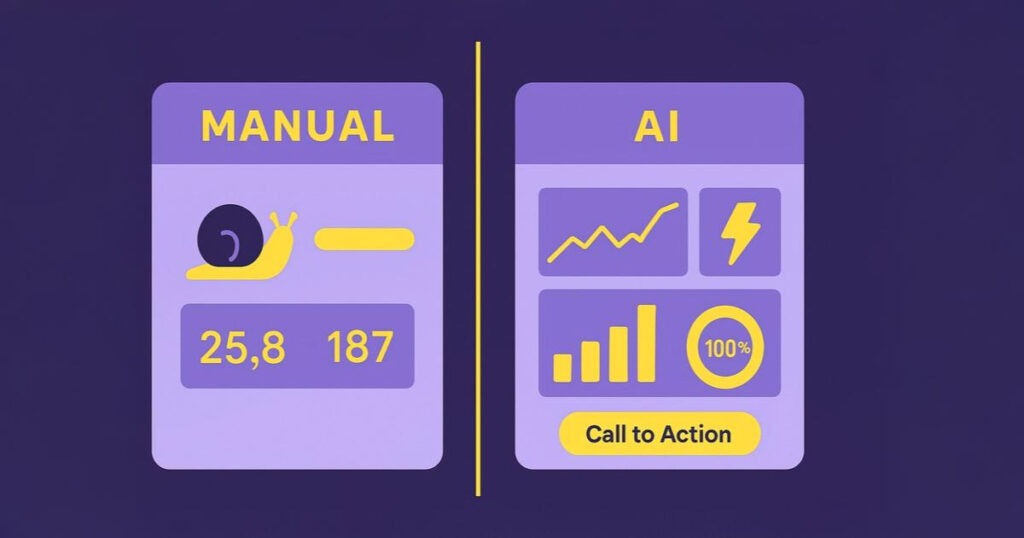
7 Secret AI SaaS Messaging Tactics to Make Your Pitch Irresistible
You have three seconds to keep a visitor on your site. In that blink, your words decide victory or obscurity. I learned this the hard way while helping founders shape their first AI SaaS messaging framework. Their outcomes soared once the message clicked.
A recent study shows that 92% of companies plan to raise AI budgets within three years. That means competition will only intensify. Another report finds 99% of firms used at least one SaaS product in 2024. In a sea of claims, clarity wins.
Clear words need structure. And a SaaS messaging framework brings that structure. Add artificial intelligence to the mix, and the stakes double. The right AI messaging not only informs but also reassures skeptical buyers. It aligns your customer positioning and moves them step by step toward a demo.
Over the next few minutes, I will hand you seven tactics. Each tactic shows how to build, test, and scale a repeatable system. I will also share a simple messaging framework template you can adapt today. Together, we will refine your voice, explain your AI tool, and turn visitors into champions.
Grab a notebook. Let’s craft your competitive edge now.
Lead With Customer Outcomes, Not AI Jargon
We start with the biggest mistake I see founders make: letting shiny tech overshadow hard, measurable business wins right now.
Frame Outcomes First
Pain grabs attention faster than features. When founders speak first about algorithms, buyers drift. They want results. So the opening line of your AI SaaS messaging framework must paint a before-and-after scene.
Start with one core metric. Example: “Cut manual forecasting time by 60%.” That promise anchors your customer positioning. Next, briefly explain your AI tool in two lines max. Tie the mechanism to the outcome, not the other way around.
Buyers also judge credibility. Studies show only 1% of leaders believe their AI rollouts are mature; they need guidance. Your AI SaaS messaging framework should show how maturity looks in practice.
Remember clarity. Replace “machine-learning engine” with “prediction model” if that lands better. Then test with prospects. Is the claim clear in five seconds? If not, simplify it.
I map this step in every SaaS messaging framework workshop. We outline pains, gains, and supporting evidence. Then we slot them into a reusable messaging framework template. That template becomes our North Star.
To keep up discipline, list three benefits of your AI tool. Each benefit should answer one top objection. Then add a short sentence to explain your AI tool again, using different words. Repeat the cycle on your site, in ads, and in talks.
Finally, codify the language in a living guide. This guide is part of your AI messaging toolkit. It keeps everyone on brand and drives consistent results. That consistency is one of the most overlooked messaging best practices.
Adopt The Six-Part AI SaaS Messaging Framework
Structure liberates creativity. I use a six-block map so every word lands and every reader knows exactly why you matter.
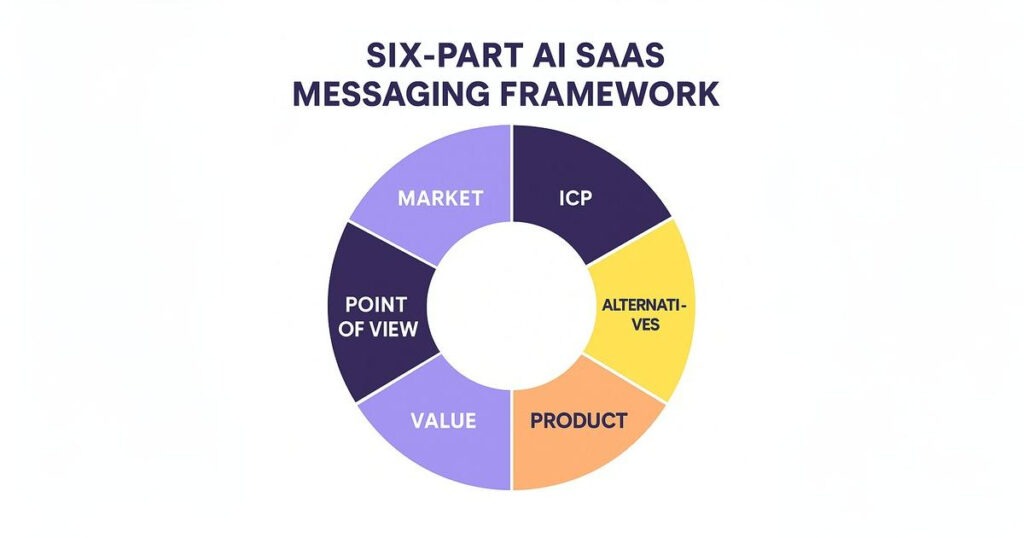
The Six Blocks That Win Trust
Every strong narrative follows a structure. In my playbook, that structure is a six-part AI SaaS messaging framework. It covers market, ICP, alternatives, product, value, and point of view. When each block is clear, buyers feel safe.
- First, there’s the market. Define the real-world shift that makes your offer urgent.
- Second, you have ICP. Name the roles that wake up with the pain.
- Third are the alternatives. Show life with spreadsheets or legacy apps.
- Fourth is the product. Here, you finally explain your AI tool in plain language.
- Fifth, you have value. Tie outputs to measurable wins.
- Sixth is your point of view. Plant a flag that only you can defend.
I guide founders through this SaaS messaging framework on a vision board. We fill each block inside a shareable messaging framework template. The template forces brevity using one sentence per block, and teams appreciate the guardrails.
Why six parts? Because it mirrors how buyers think. They first ask, “Is this my world?” That is the market and ICP. Next, they ask, “Will it beat my current hack?” Those are the alternatives.
Then they ask, “What does it do?” Now you explain your AI tool again, but richer. Finally, they ask, “Will it pay off and align with my beliefs?” That is the value and point of view.
I weave the same six-part logic into emails, decks, and ads. Doing so cements the AI messaging across channels. It also brings harmony to customer positioning sessions with sales. Uniform language saves prep time and slashes confusion, which are proven messaging best practices.
Repeat this pattern, and your AI SaaS messaging framework will scale as your platform grows. It keeps your voice steady even when features multiply.
Layer In AI-Driven Proof Points And Metrics
Bold statements are cheap. However, numbers cost effort, reveal truth, and move cautious buyers from polite interest to committed partnership quickly.
Proof Builds Trust
Claims feel empty without numbers because buyers crave evidence. This is supported by the fact that 62% of B2B buyers review up to seven pieces of content before calling sales.
Inside an AI SaaS messaging framework, I dedicate a column to proof. We log before-and-after metrics, user quotes, and model scores. That column then feeds every landing page. It also fuels trust-heavy AI messaging sequences.
Start with outcome metrics. For instance, “Support tickets decreased by 30% in month one.” Follow with model metrics: precision, recall, and latency. Finally, use social proof. This can be a short quote that repeats the result in human words.
Remember to tag each proof point back to the block it supports in your SaaS messaging framework. That link keeps numbers relevant. Store everything in your living messaging framework template so teammates can grab facts fast.
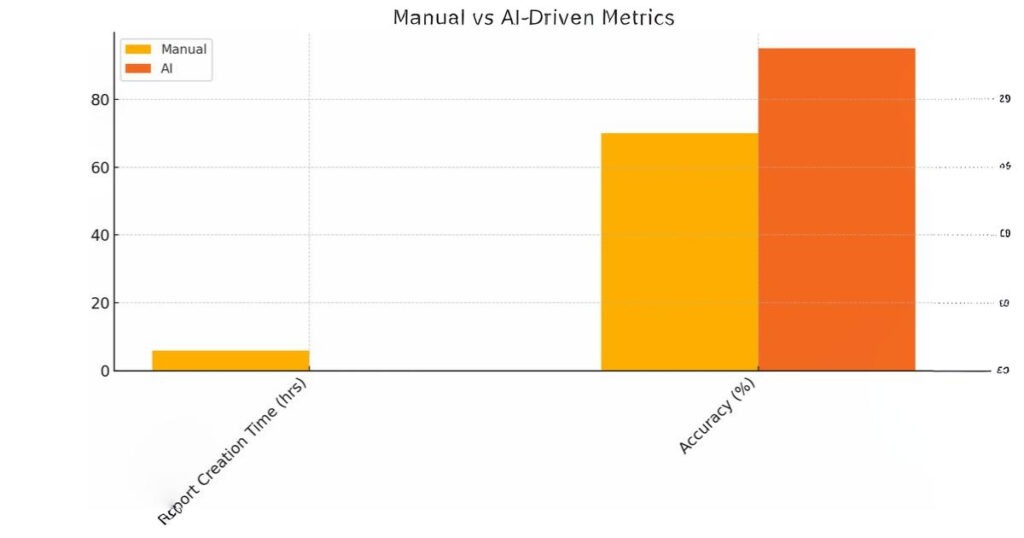
When you explain your AI tool, weave numbers into the sentence. Instead of “Our engine forecasts demand,” try “Our engine forecasts demand with 95% accuracy.” It’s a small change with a big trust jump.
Metrics also fortify customer positioning. Investors love seeing early traction in a crowded space. And prospects love seeing their peers win.
A word of caution, though. Flooding a page with stats can be distracting. So, follow messaging best practices. Lead with one killer number near the top and scatter supporting numbers deeper.
Also, keep each sentence tight. Data plus clarity equals conviction, and conviction drives revenue. Let your AI SaaS messaging framework guide the balance every time.
Harness the Voice of Customer For AI-Specific Insights
Most times, your prospects have already given you the perfect copy. You just have to listen, document, and mirror their words back to them.
Speak Their Language
Your words matter only if they mirror customer language. I run interviews and quick surveys to collect that language. Those insights slot neatly into my AI SaaS messaging framework.
Start by asking prospects how they describe their pain. Then capture their exact phrases.
Next, ask them to explain your AI tool back to you after a demo. Their version often exposes jargon you missed. Feed that raw copy into the “Voice” column of your messaging framework template.
Then review your AI SaaS messaging framework. Swap internal words for customer words. Swap “predictive analytics” for “automatic recommendations” if that is what they said. Do this quarterly as markets shift fast.
Pay special attention to emotional triggers. Words like “confidence” or “peace of mind” can lift conversions. Map each trigger to the relevant benefit in your AI SaaS messaging framework. That mapping drives crystal-clear AI messaging.
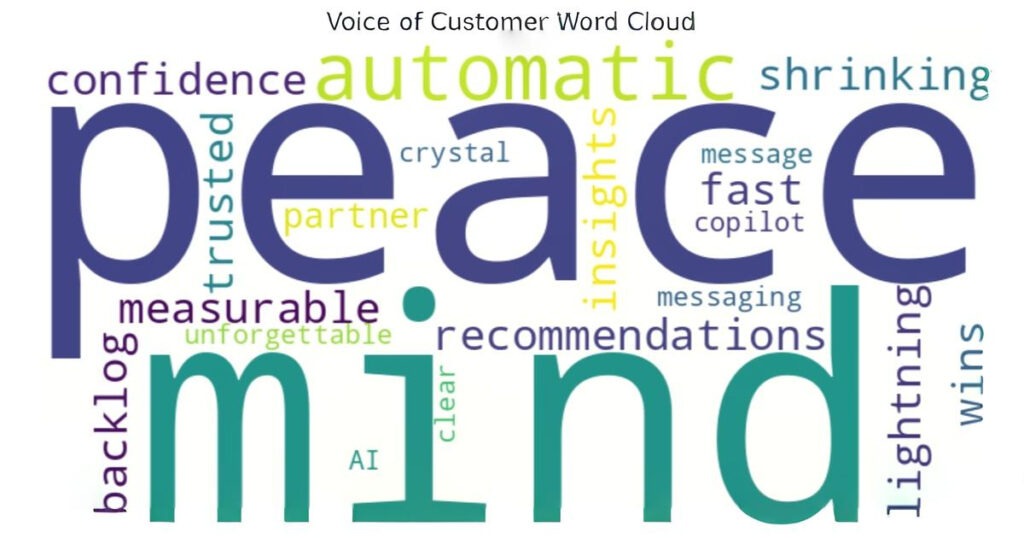
I also score how often prospects repeat specific descriptors. High-frequency terms become headline candidates. Low-frequency terms stay in body copy. This scoring method is one of my core messaging best practices.
Finally, share the updated language set with the sales team. It tightens customer positioning across calls. It also arms successful teams for onboarding.
Remember, your messaging framework template is alive. Every new phrase fuels fresher campaigns. And every campaign yields more phrases. When you loop this process, you never guess again. You always speak the words buyers already trust.
Build Differentiation With AI-Driven Messaging Pillars
Pillars give your message muscle. They let teams scale content fast without diluting the promise that makes you unique today.
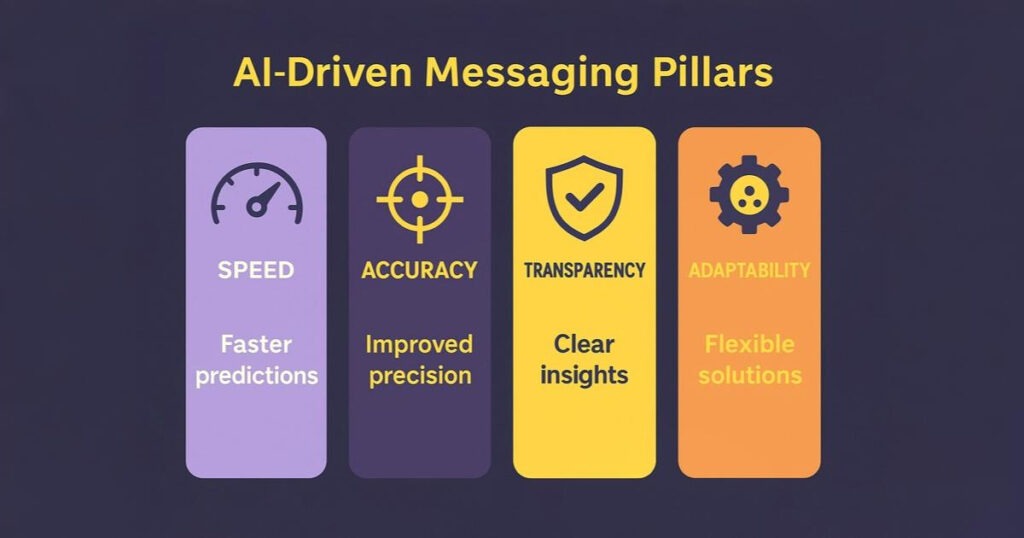
Craft Your Pillars
Features change, but pillars last. I define three to five messaging pillars for every client. Those pillars sit inside the core AI SaaS messaging framework and guide every campaign.
Begin by choosing themes that your market values. These could be speed, accuracy, transparency, and adaptability. For each theme, write one headline that could stand alone. Store each headline in your messaging framework template. Repeat the process until you have a tight set.
Now, it’s time to validate. Show the draft pillars to three ideal users. Ask them to explain your AI tool in their own words after reading. Their responses reveal which pillar sticks.
Layer the winning pillars back into the AI SaaS messaging framework. This preserves unity. It also strengthens your SaaS messaging framework for upcoming product launches.
Differentiation hinges on contrast. So, use proof points. For a speed pillar, quote the average prediction time versus manual. For transparency, show model explanations. These details sharpen customer positioning.
I color-code pillars in the messaging framework template. The color follows each line of AI messaging, like social posts, decks, and even onboarding screens. Consistent color cues signal reliability. Consistency is one of the timeless best practices in messaging.
Remember to revisit the pillars quarterly. Add new proof as you ship features and update the AI SaaS messaging framework again. Then let marketing and sales explain your AI tool freshly, but always along the same lines.
By cycling pillars through this system, you gain durable distinction and save content-planning hours. Pillars are the muscle fibers of your message. Keep them strong.
Humanize AI With Semiotics And Storytelling
Even the smartest algorithm needs a heartbeat. Storytelling pours warm blood into cold code, making intelligence feel welcoming to humans.

Stories Beat Specs
Algorithms feel cold, but stories warm them up. I anchor every story in the AI SaaS messaging framework. The framework gives me guardrails while my creativity roams.
First, choose a relatable metaphor. I like “copilot” or “personal trainer.” But you should test your options with users. Ask them to explain your AI tool after hearing the story. If they can retell the benefit in one breath, you picked well.
Next, connect the metaphor to emotion: map fear, hope, or relief to one pillar. Store the mapping in your messaging framework template. This template soon looks like a storyboard.
Now weave story beats. Scene one, the struggle. Scene two, discovery of your solution. Scene three, the new normal. Keep each beat within fifteen words, as short beats stick.
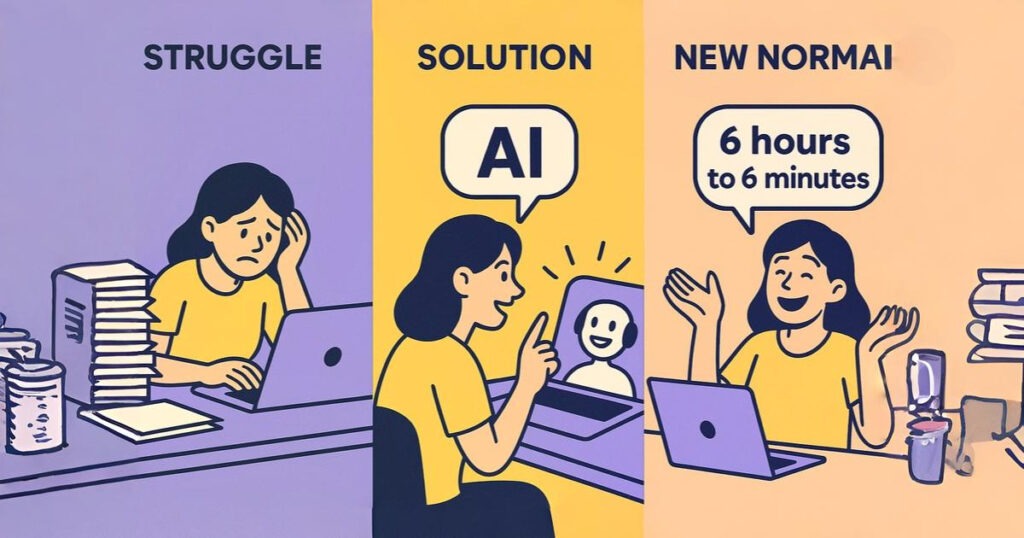
While writing, sprinkle signals of humanity. Show a real user smiling at a shrinking backlog. Show delight in a quick win. This imagery supports AI messaging that feels alive, not robotic.
Do not forget metrics. Even a story needs numbers. “Weekly report creation fell from six hours to six minutes.” Such vivid proof deepens customer positioning and sustains trust.
Then rinse and repeat. Feed every new success story back into the AI SaaS messaging framework. Update the story bank within your messaging framework template. This loop keeps narratives fresh.
Practice also sharpens messaging best practices. Over time, you will sense the rhythm of tension and resolution. Your message will sing, and prospects will remember.
Continuously Test, Iterate, and Refine Your AI Messaging
Messaging excellence is a living discipline. Regular experiments turn fragile hypotheses into durable revenue engines that never stop driving growth.
Test Everything
Markets shift fast. So, the perfect message today may flop tomorrow. That is why my AI SaaS messaging framework finishes with a feedback loop.
Launch a headline test each month and change only one word. Then measure clicks and log results in your messaging framework template. Tag the results with the date and variant. Over time, a pattern emerges.
I keep a rolling dashboard. If a variant beats the control by 10%, I promote it across the site, ads, and decks. The win also updates the AI SaaS messaging framework. That update reminds every teammate to explain your AI tool in the new, proven way.
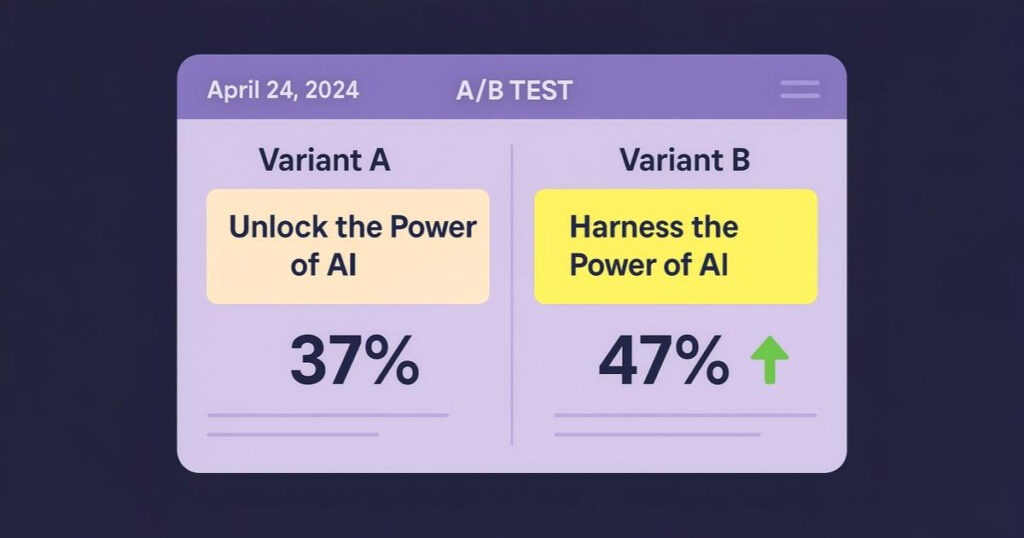
Metrics guide truth, which is why you must track bounce rate, scroll depth, and demo requests. Tie each number to a message change. This rigorous tracking embodies messaging best practices.
Also, sharing results boosts morale. Sales teams love seeing shorter call times. Support teams love watching ticket counts drop. These wins polish customer positioning in real life.
Remember, small tests are scalable. One word on a hero banner can lift lead volume overnight. But only if you capture the learning. So, never let data sit in a silo. Pump it back into the living messaging framework template again.
Finally, schedule a quarterly message audit. Here, I bring the entire growth pod together.
We compare early hypotheses with reality. We prune fluff and add fresh proof. We then run another split test. Then we celebrate progress.
This tight loop keeps the AI SaaS messaging framework evergreen and the messaging sharp. It forces you to explain your AI tool better every quarter.
FAQs: AI SaaS Messaging Frameworks
Here are the answers to the top questions about building and applying your AI SaaS messaging framework effectively.
What is an AI SaaS Messaging Framework?
An AI SaaS messaging framework is a structured narrative map. It aligns teams on market, audience, proof, and story. It ensures that you explain your AI tool the same way everywhere.
How Do I Explain My AI Tool Without Jargon?
Lead with outcomes. Then use one crisp and clear sentence. For example, “Our model predicts churn within minutes.” This approach sits at the heart of every AI SaaS messaging framework and follows proven messaging best practices.
Why Do I Need a Messaging Framework Template?
A shared messaging framework template prevents drift. Designers, writers, and sales reps pull from the same source. This unity sharpens customer positioning and speeds production.
How Often Should I Update My Framework?
Quarterly. Each product release should trigger a review. Insert new wins and remove stale claims. Continuous updates keep your AI SaaS messaging framework and messaging relevant.
Can One Framework Serve Multiple Products?
Yes, if you treat it as a parent story. Draft a child sheet for each product inside the same messaging framework template. Use shared pillars for coherence. Then explain your AI tool variations under each child. This method keeps the scale manageable.
From Words to Wins: Make Your Message Unforgettable
Every tactic we covered works in concert. Outcomes open the door. The six-part AI SaaS messaging framework keeps the story straight. And proof points build trust.
Using the voice of your customers sharpens every word. Pillars anchor differentiation, stories humanize intelligence, and continuous testing keeps messages alive. Apply them in that order, and your pitch turns magnetic.
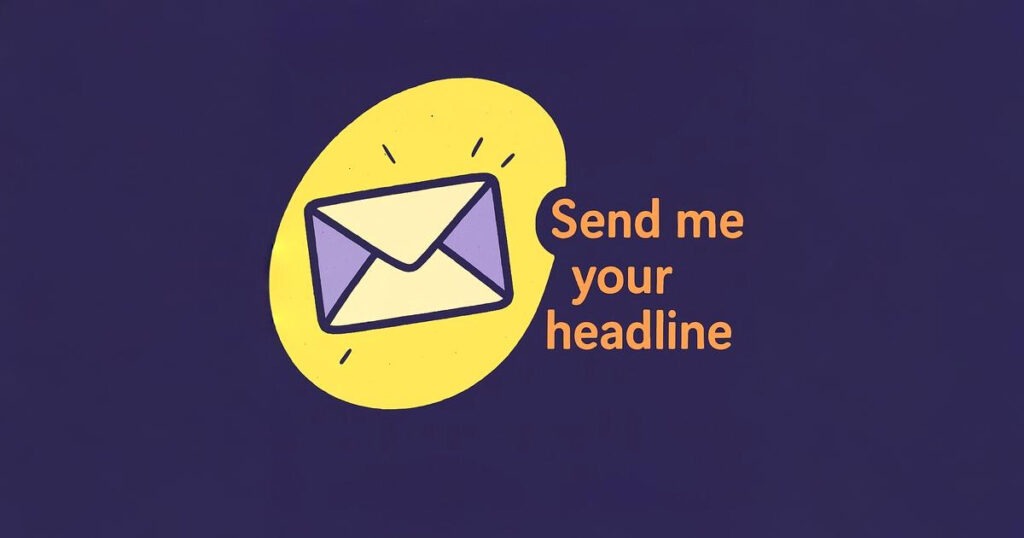
Are you ready to move from insight to action? I have helped dozens of AI founders do precisely that. Share your current headline with me. I will audit it within one business day and outline quick wins.
Click on the email below this post and send me a message. Clarity is closer than you think. Let us build it together. Either way, your next pitch starts today.
